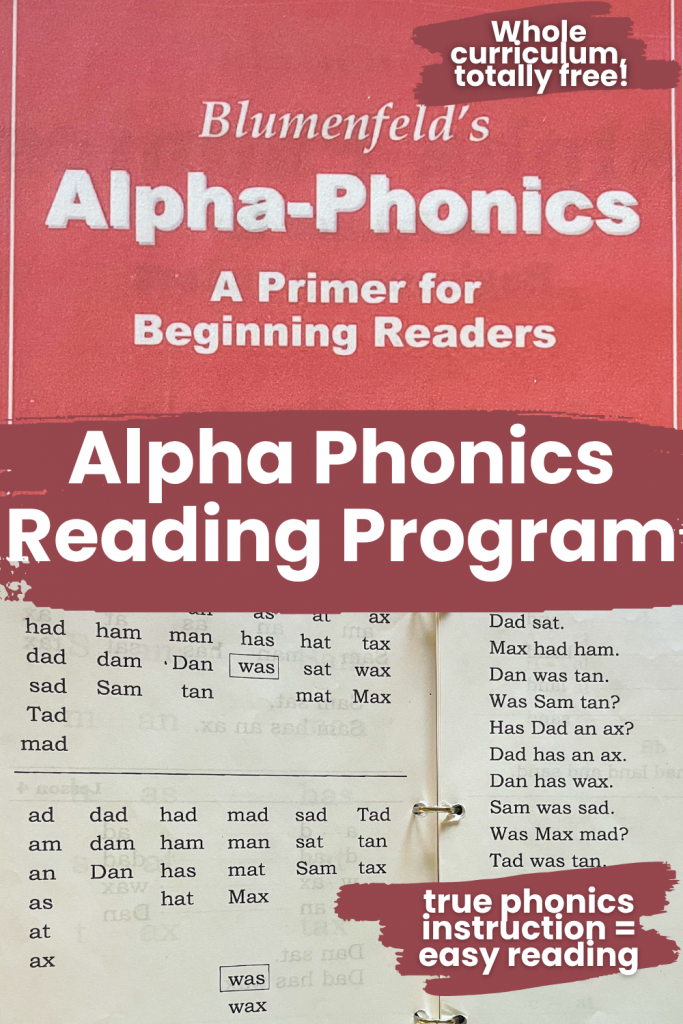Alpha Phonics is a reading program that has saved our sanity while teaching our 4 and 5 year olds how to read. The books and materials are online for free and have been for years, available for home printing, but they are getting harder and harder to find and more and more paid versions are all that show up in search results. I am putting this together as a resource for people looking to use free PDF versions of the books or to print at home rather than purchasing expensive bound copies elsewhere, but I will link to ready-to-ship materials as well if that’s what you’d prefer.
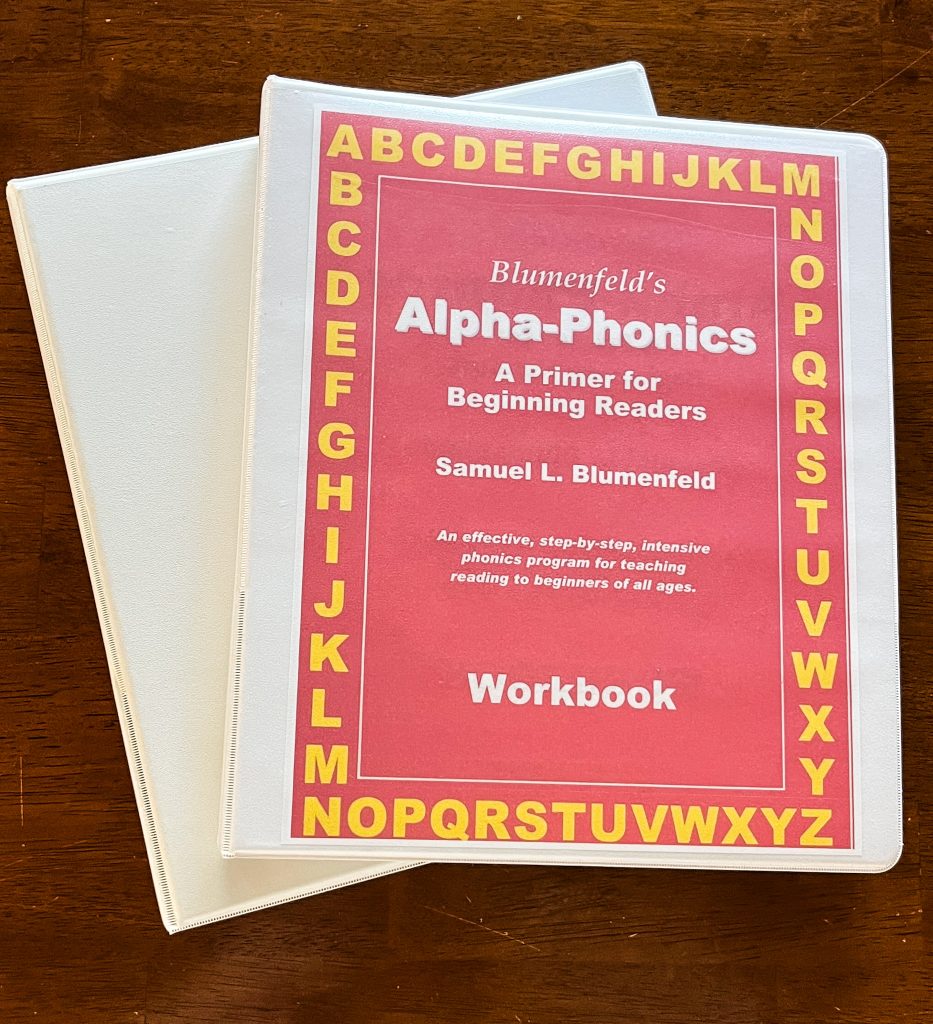
This post may contain affiliate links, which means we may receive a commission, at no extra cost to you, if you make a purchase through a link. Please see our full disclosure for further information.
Free Alpha Phonics Resources by Samuel Blumenfeld
Free alpha phonics resources. Most of these are resources by Samuel Blumenfeld and come as ready to print PDFs for a complete reading curriculum!
Alpha Phonics Primer
This is the main resource for teaching reading. It can be used fairly intuitively on its own but the accompanying manual, listed below, is a wonderful instructional resource for the instructor. There are also paired readers that work along with the Primer and say which lessons would have to be learned or mastered in order to fluently read through each of the readers.
Students begin by learning the names and sounds of individual letters, and of course identifying upper and lowercase letters. They then start by blending two sounds together at a time and recognizing the words that the sounds make, “as, at, ax, am” etc. The first fourteen chapters really cement this understanding of blending by using only the short-a, no long vowel sounds, and no other vowels, until the concept is truly in their mental framework for reading. I love that!
I was so surprised by how many complete sentences can be made using only short-a for the vowel. This builds kids reading confidence quickly because they aren’t dumping information too quickly for it to be absorbed. Blumenfeld really knew what he was doing! “Dad sat.” and “Max was sad and mad.” are a great jumping in point for kids.
After this main concept is mastered and more consonant sounds have been added, the other short vowel sounds are added and used thoroughly in a progression that leads the child to understand how to blend it with every consonant sound. Only after all of the short vowel sounds have been added in do we progress to learning two-letter phonograms such as “th,” “ch,” “sh,” etc. After this word ending blends such as “-nd,” and “-nt,” are introduced. And each of these new lesson sections includes stories or sentences that show the lesson in action. You can also combine the graduated Alpha Phonics Readers in, between the appropriate lessons, to truly cement what has been learned.
As a personal testimony, my 5 year old had already worked all the way through the “Teach Your Child to Read in 100 Easy Lessons” book (which is really good but has some key issues) and hated reading and was convinced that she simply could not read and would never enjoy it. We started this curriculum off at the beginning with the easy basics, and the flew through it. As she got to lessons that challenged her, she slowed but persisted, and quite joyfully as the lessons are short and direct and teacher guidance helps them never feel overwhelming. Now as you can see from the chart below, she is at lesson 44 and able to read very fluently and clearly, with very few pauses or questions. The page of sentences in the center photo took her about 4 minutes to read out loud, even though they were words she had only learned the blends for the day before. And that was our whole reading lesson. She loves how fast she can do her lesson, how easy it is to be correct, and putting those cute little stickers on her chart makes it enjoyable too!
My 4.5 year old daughter was catching onto reading last year even from seeing her sister work away at it. We also started her in TYCTRI100EL but switched to this about half way through. I would say reading comes more naturally to her than to my oldest, but she doesn’t enjoy “doing school” as much and is a reluctant learner. As we are doing a very loose “kindergarten” schooling for her this year with just reading, math, and Catechism, I don’t mind that some of the reading lessons get split into two days. She hates not adding a sticker to her chart but sometimes a shorter session wins out anyway. She is currently at lesson 25 (we are 10 weeks into our school year) and quite fluent for where she is. (As an aside, she is 2/3 of the way through her math book for the whole year too and regularly does about a week’s worth of pages in one sitting.)
Free printable PDF: Alpha Phonics Primer
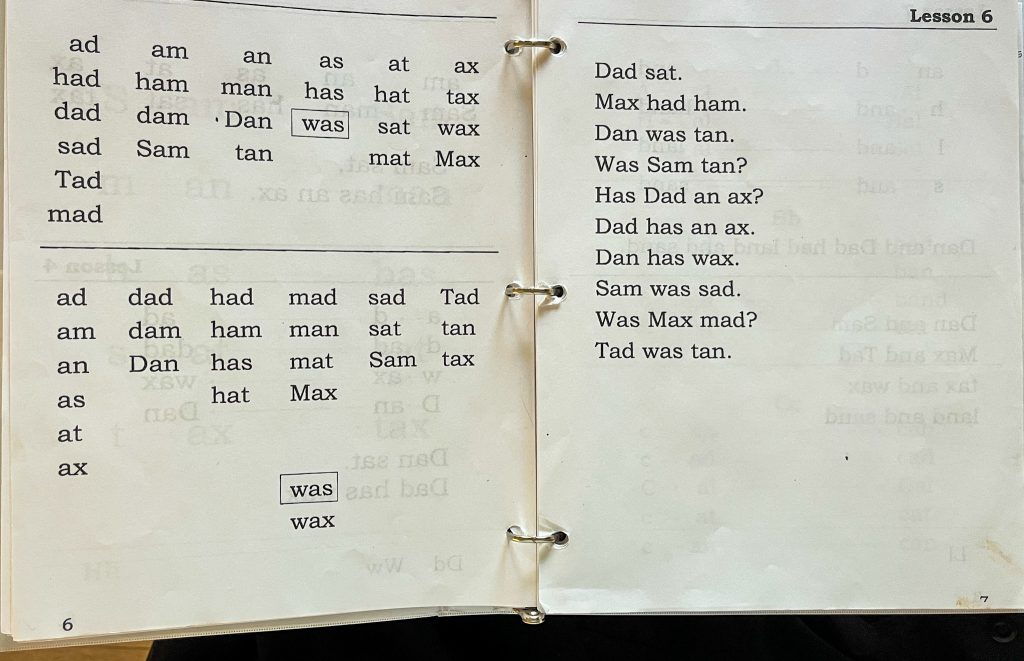
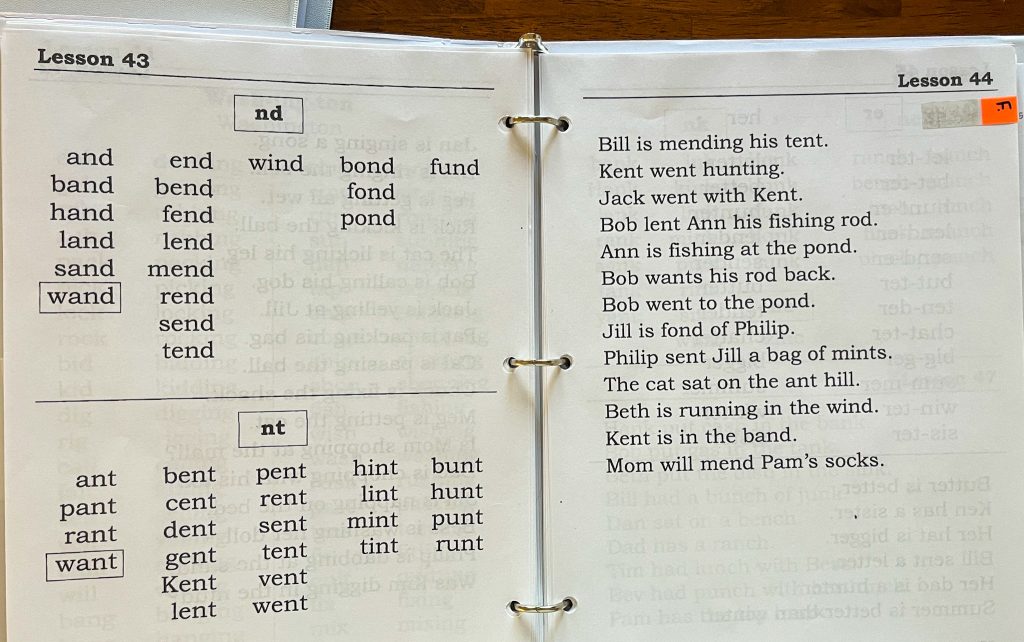
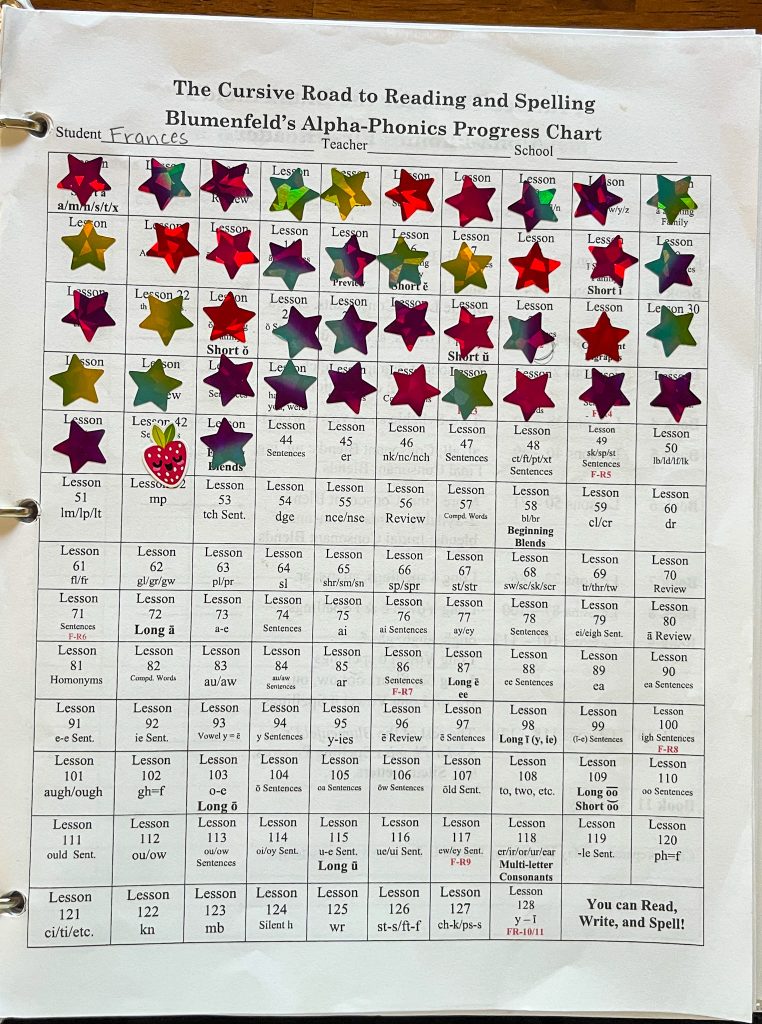
Alpha Phonics Instruction Manual
This manual guides the instructor through use of the Alpha Phonics Primer and First Readers. It is a short but succinct guide to the fundamentals of reading readiness, student instruction, repetition, and to the methodology used in creating these wonderful reading resources.
Free printable PDF: Instruction Manual
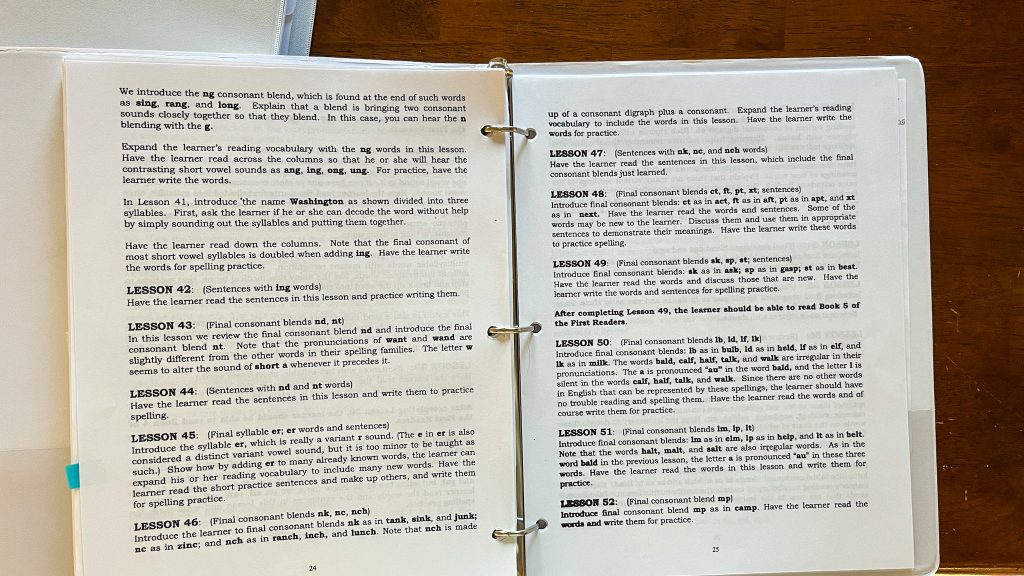
Alpha Phonics First Readers
I love that there are build in graded readers that accompany this course. Each reader has about 11 pages of stories that are short and easy to read. The lesson plan for working through the main Alpha Phonics shows you exactly how far through the lessons a child must be in order to comfortably and competently read through the stories of each reader. Giving children more reading practice using only the specific reading skills they have acquired up to a certain point is so incredibly helpful. Instead of searching fruitlessly for “early readers” that your child can truly read alone unassisted, these are sure to only include letter sounds, phonograms, digraphs, etc that have already been covered in the curriculum. It is so worthwhile to see the confidence this instills in children, especially those who otherwise struggle with reading confidence.
All of the readers can be found here and printed freely. I have them all printed with their covers and arranged sequentially in a single binder with tabbed dividers between each reader, so that my 4 and 5 year old readers can easily find which book they’re reading from as we move through reading practice. This is the 2nd binder I use for this curriculum, with the main Alpha Phonics Primer lessons and the full instruction manual printed and arranged in my 1st binder.
Free printable PDFs: Reader 1, Reader 2, Reader 3, Reader 4, Reader 5, Reader 6, Reader 7, Reader 8, Reader 9, Reader 10, Reader 11
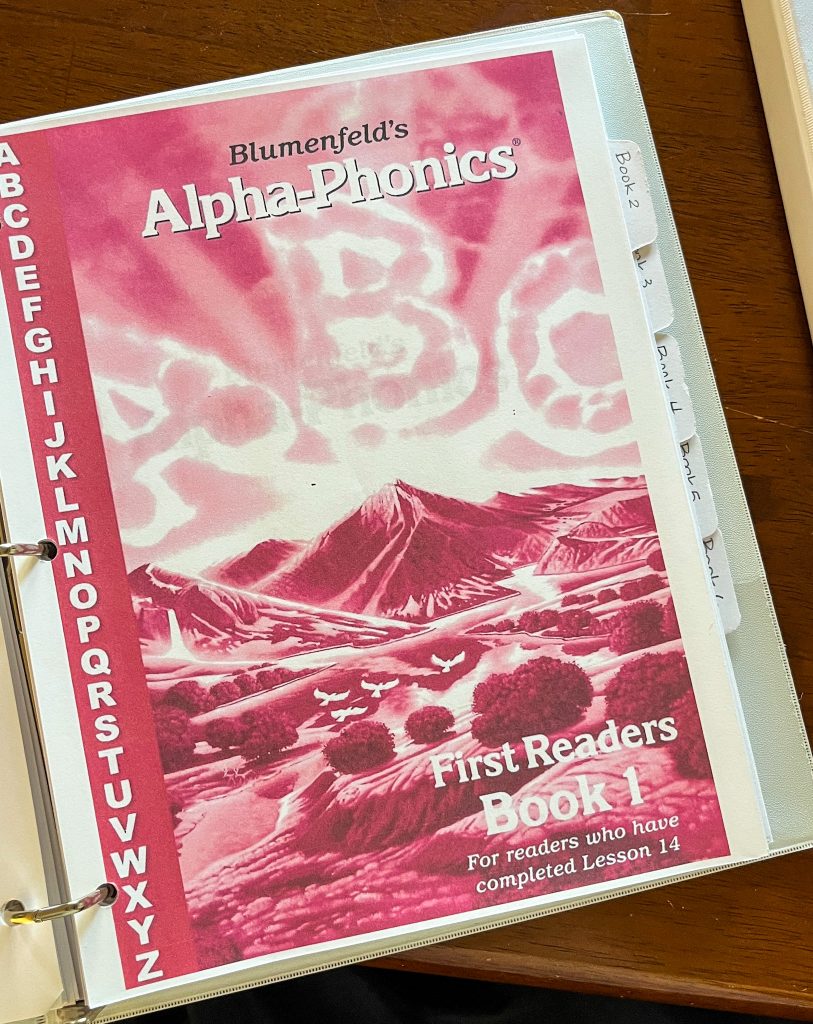
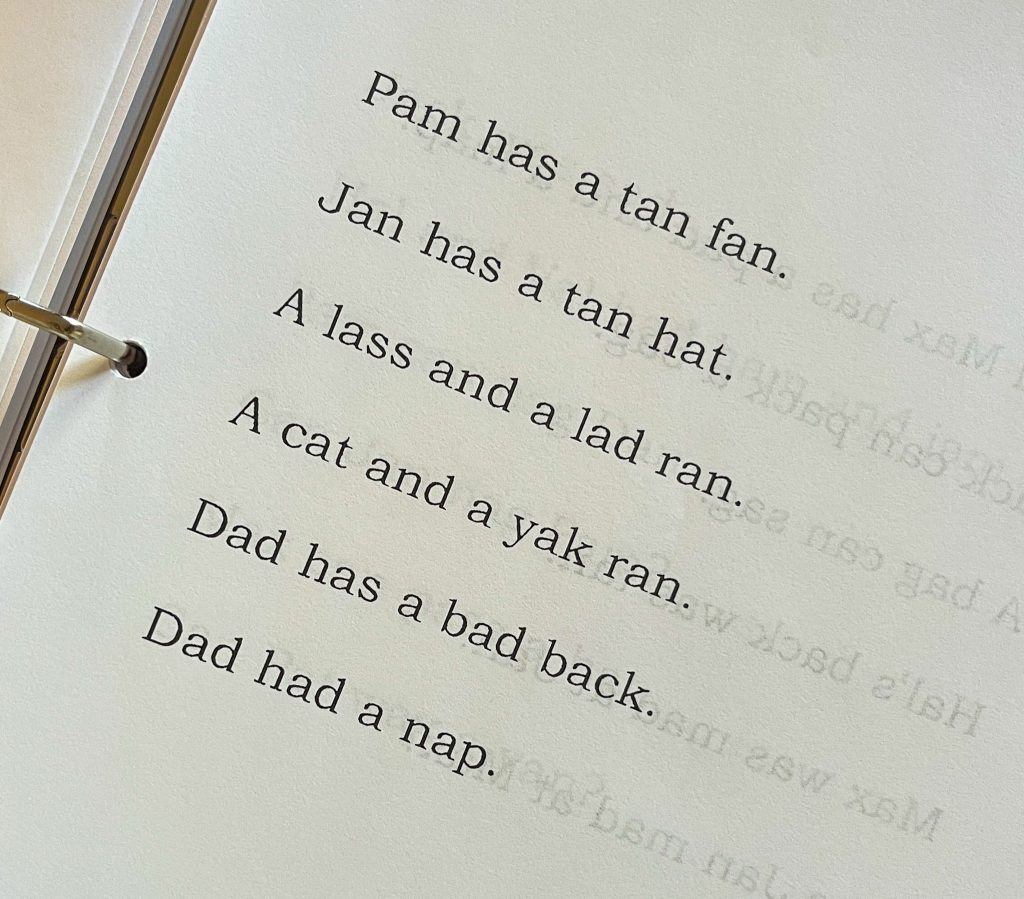
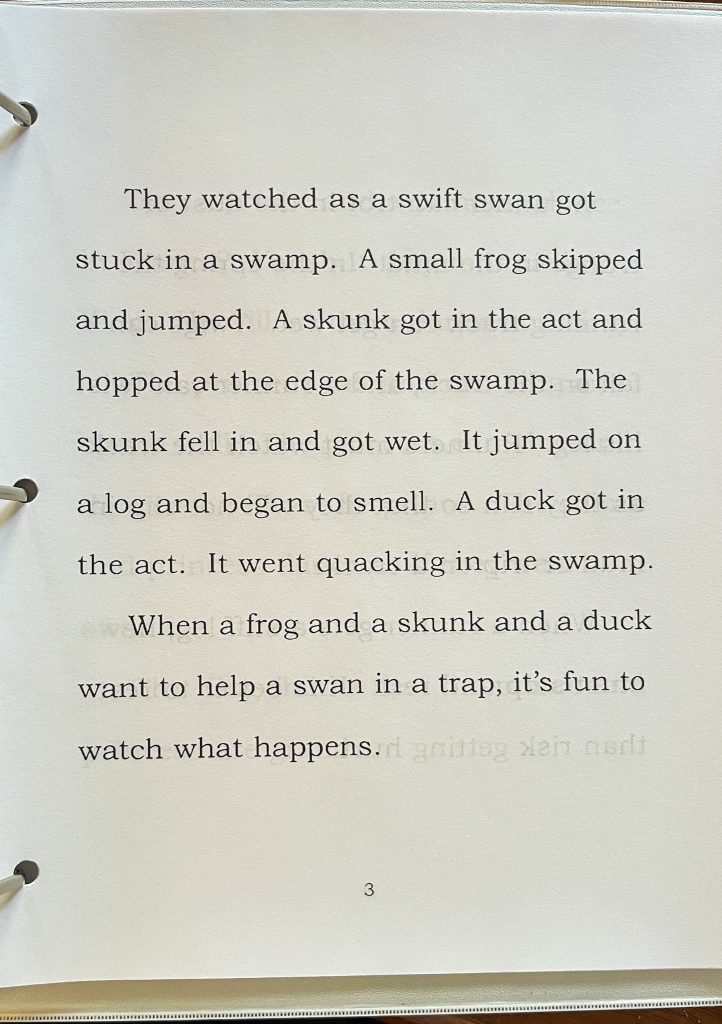
Free Alpha Phonics PDF
More Alpha Phonics Resources by Samuel Blumenfeld and others
There are multiple other resources put together by Samuel Blumenfeld and others which can accompany this curriculum. We do not use all of them regularly, but we have printed or purchased a couple.
We have the flashcard decks printed for the letter sounds and phonograms, but do not use it frequently, as our current readers have already mostly mastered the basics, and don’t really need the flashcards as we progress through new combinations. I do like having it available though and we can do a quick “pop quiz” style refresher from time to time.
Decks PDF: Decks 1-10
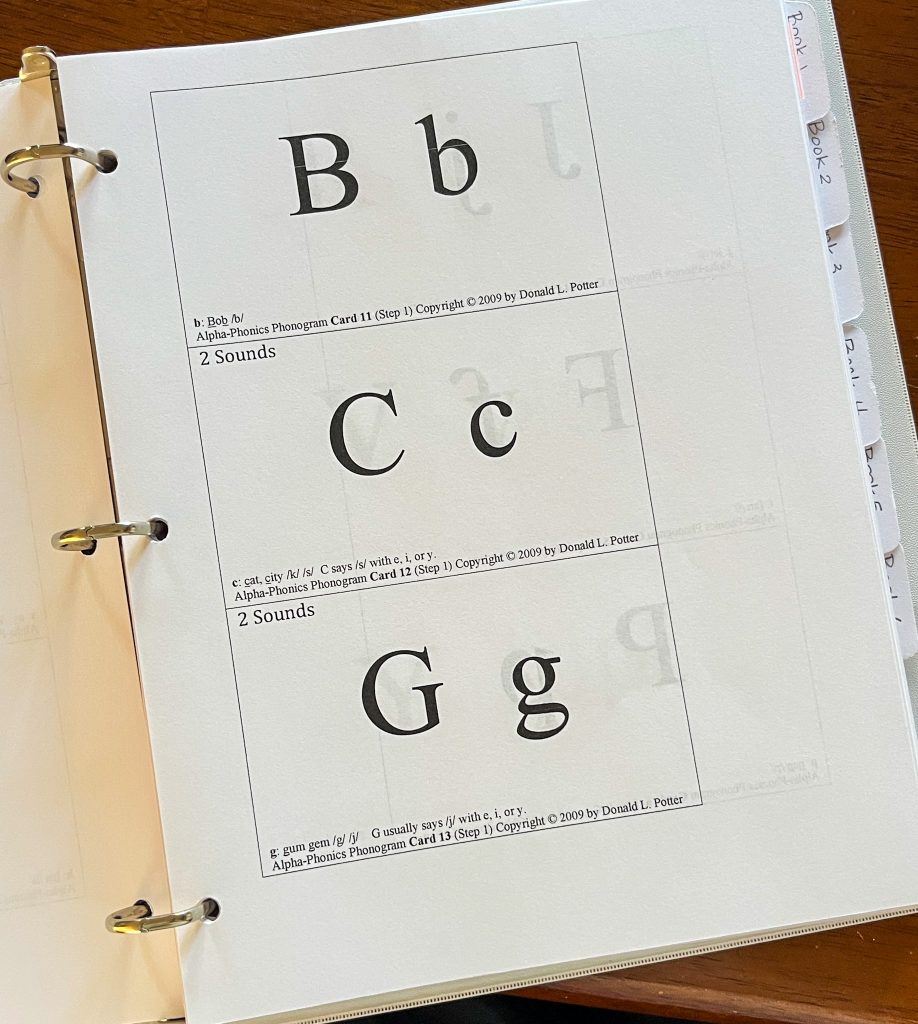
Another resource we have, this one purchased, is a paperback copy of the supplemental readers – in cursive. The reason I purchased this resource is because it is important to me for my kids to be able to read and write in cursive, and I think that seeing the same familiar words they read in print also in cursive is a great way to make that less intimidating.
These are the exact same readers linked above for free, except that they’re in cursive and in a single softcover book format. We go slower through this and use it less frequently than the print format readers, but it is a resource I’m glad I purchased and will most definitely use frequently in our homeschool journey.
Cursive Readers: First Readers Anthology by Donald Potter
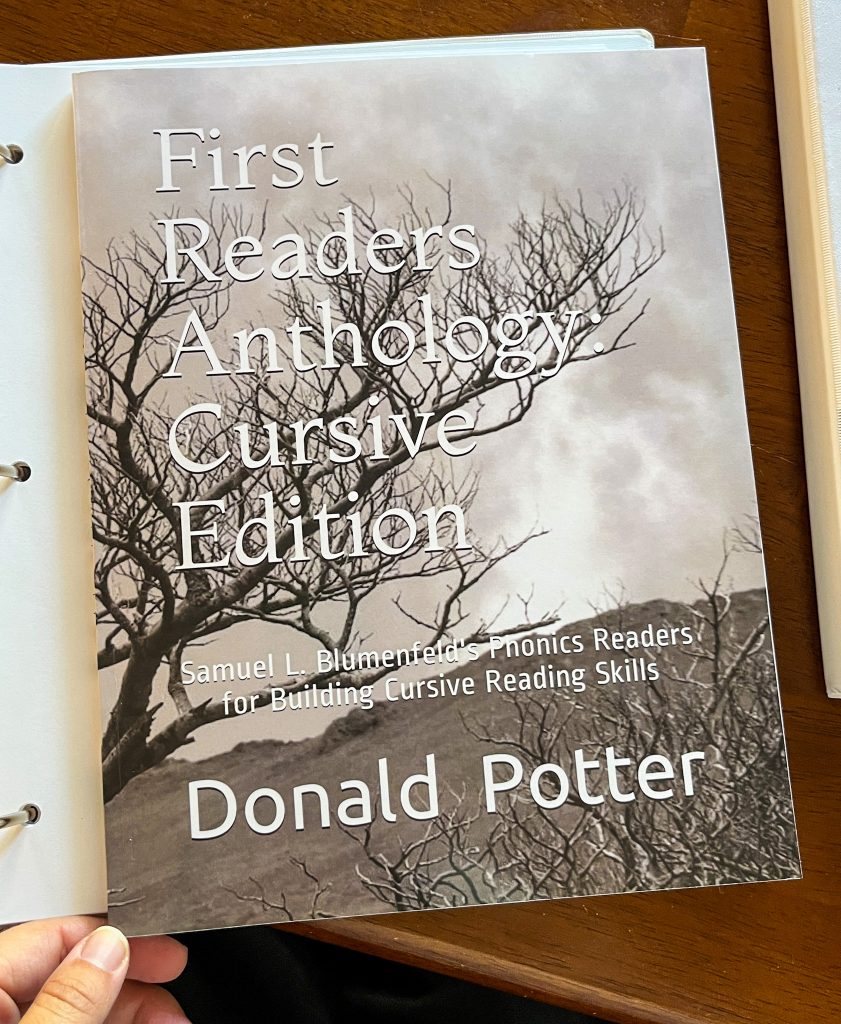
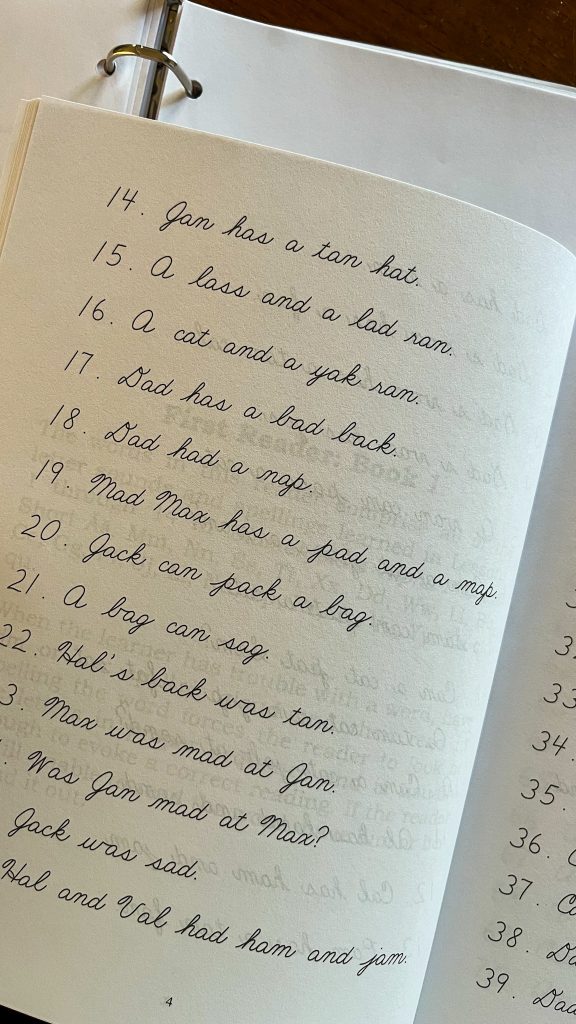
We roughly follow Donald Potter’s lesson plan for my 5 year old, and my 4 year old works through the book a little slower.
We also have printed the Progress Chart for each of them, and they get to put a small star sticker on each lesson they’ve completed. They love seeing their progress visually and getting to use stickers is a great motivator for some little girls.
There are further resources that we have not used and probably won’t unless needed down the line.
Alpha Phonics/Spalding Phonograms and Cursive Phonogram Cards
Alpha Phonics Irregular Words by lesson
Alpha Phonics “Self Tutor” with recorded instruction
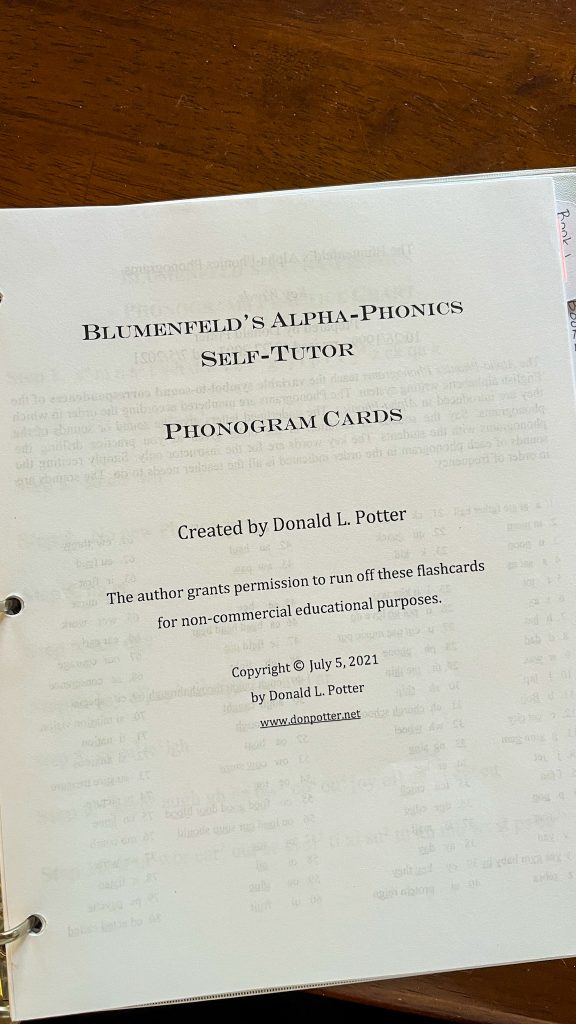
Making purchases for using Alpha Phonics
You can go the budget route and print free versions of most of the materials above. This is especially economical if you already have a good printer. We use the Epson EcoTank 4850 which uses ink bottles to refill ink reservoirs. We have printed MANY full books in the past year and a half in full color, and haven’t even used half of the initial bottle of ink. There’s an initial investment of course, but we bought it knowing that we were setting out on a homeschool journey that would involve a lot of paper and printing.
You can also get a lot of off-brand cheaper ink refills, and I know people who use those (such as these) with success. Just know that the ink quality may not be on par, but for most home printing needs they are perfectly adequate!
Once you have a functioning printer (even if it only prints black and white) all you’d need after that is a few three ring binders. I find that one inch binders work wonderfully.
If you would rather NOT print your own books and want to go ahead and purchase printed and bound versions of the Primer and Readers, Donald Potter has published them and has them available on Amazon. And here is the cursive reader book in print again.
